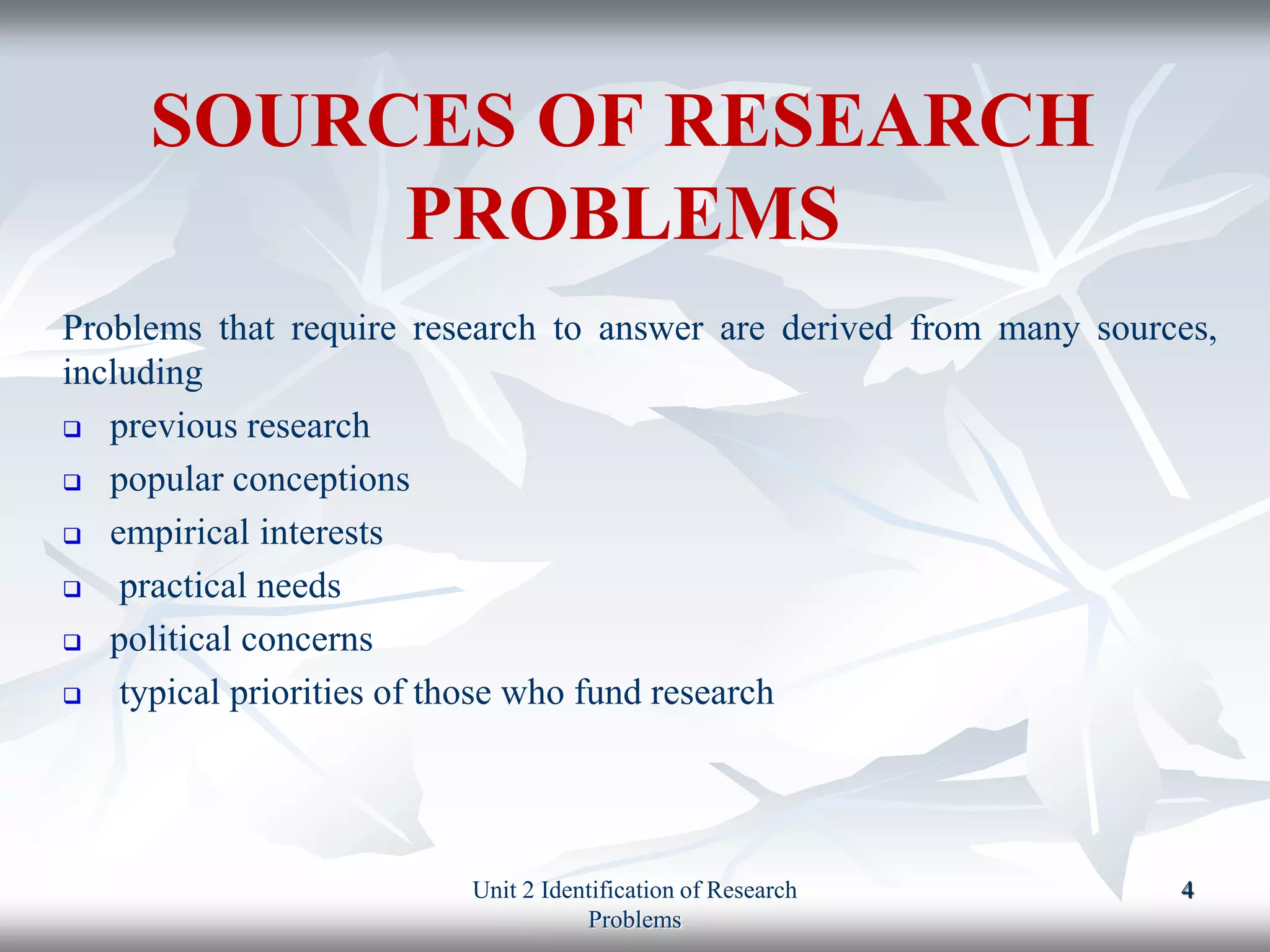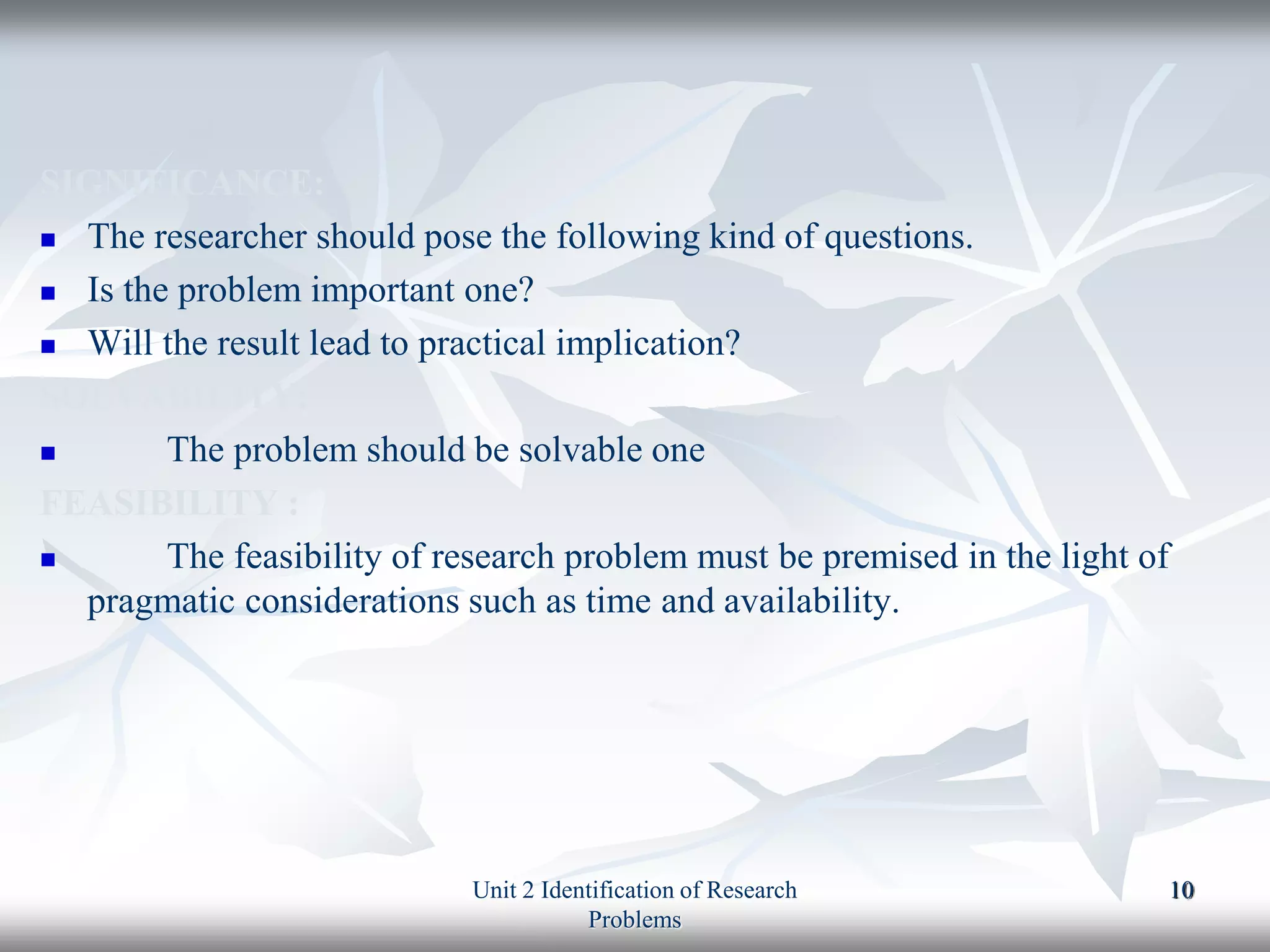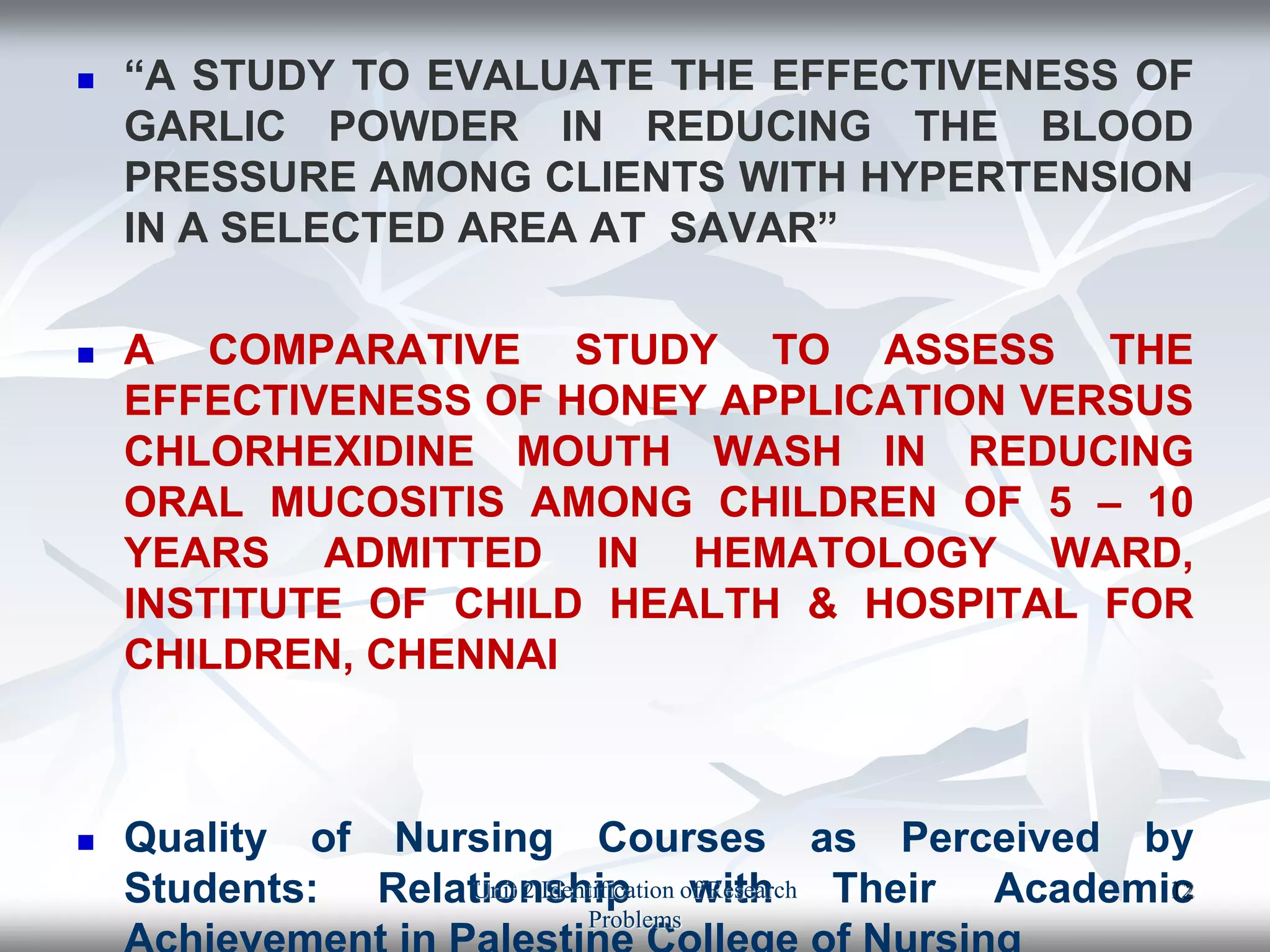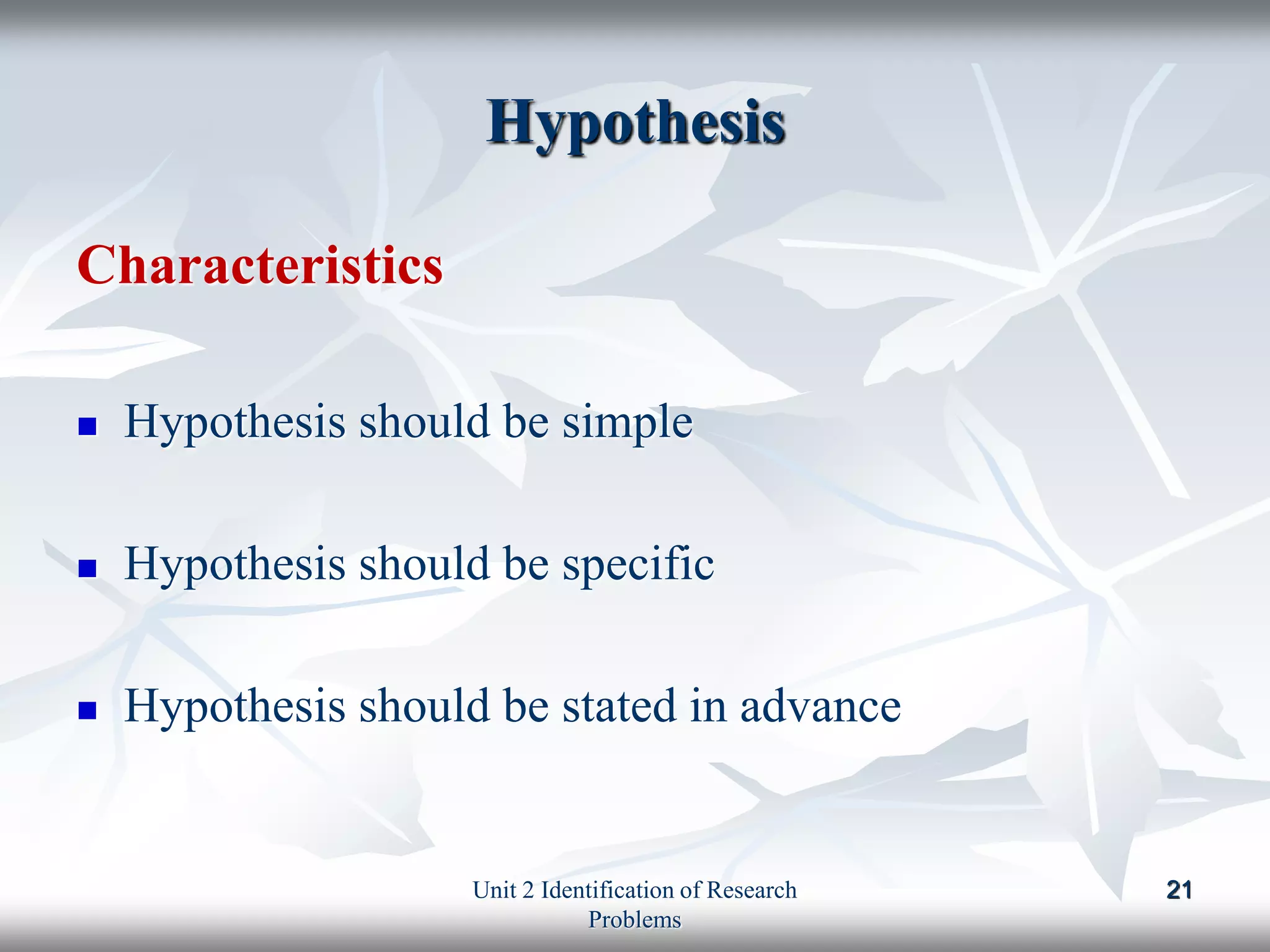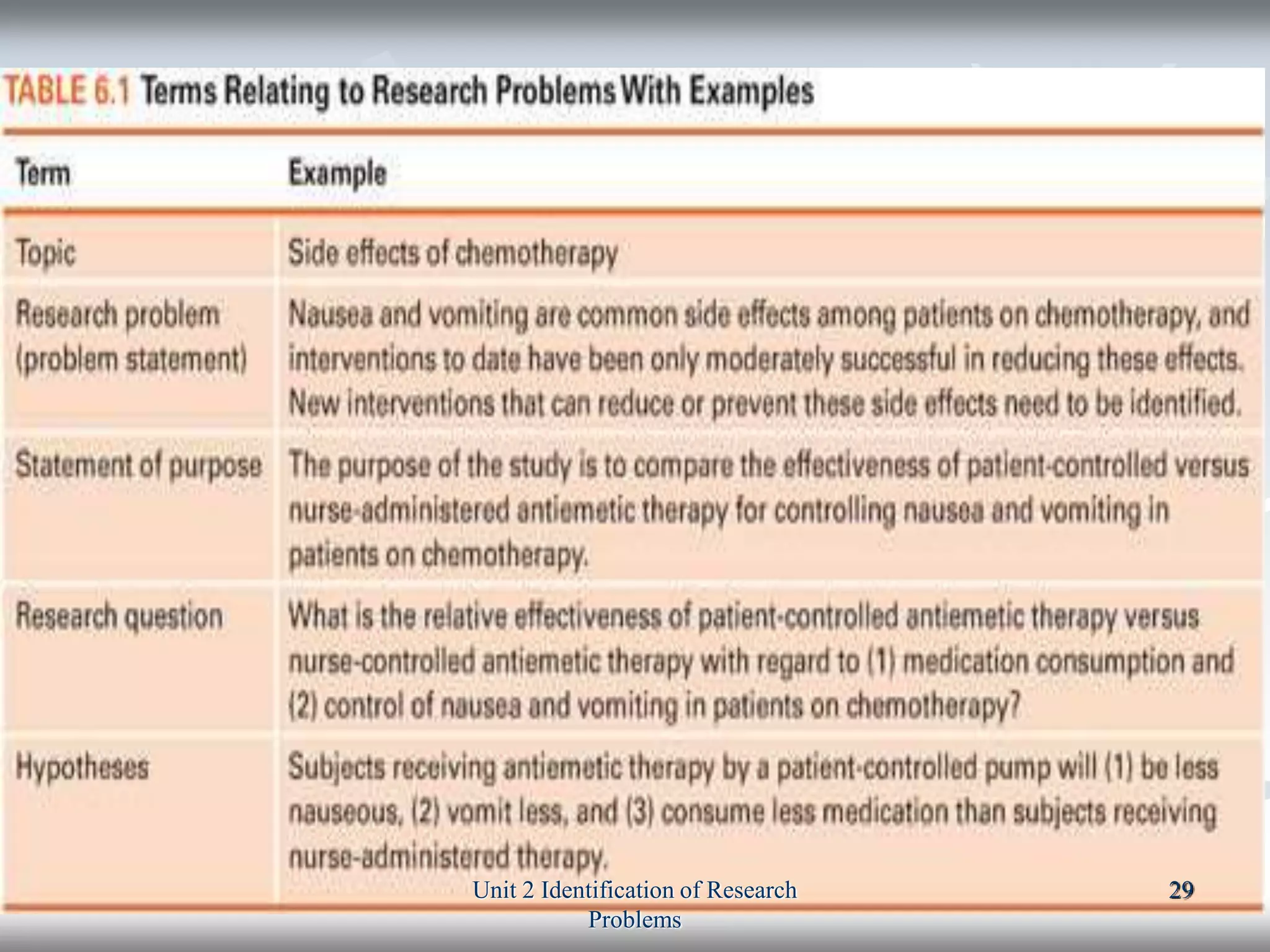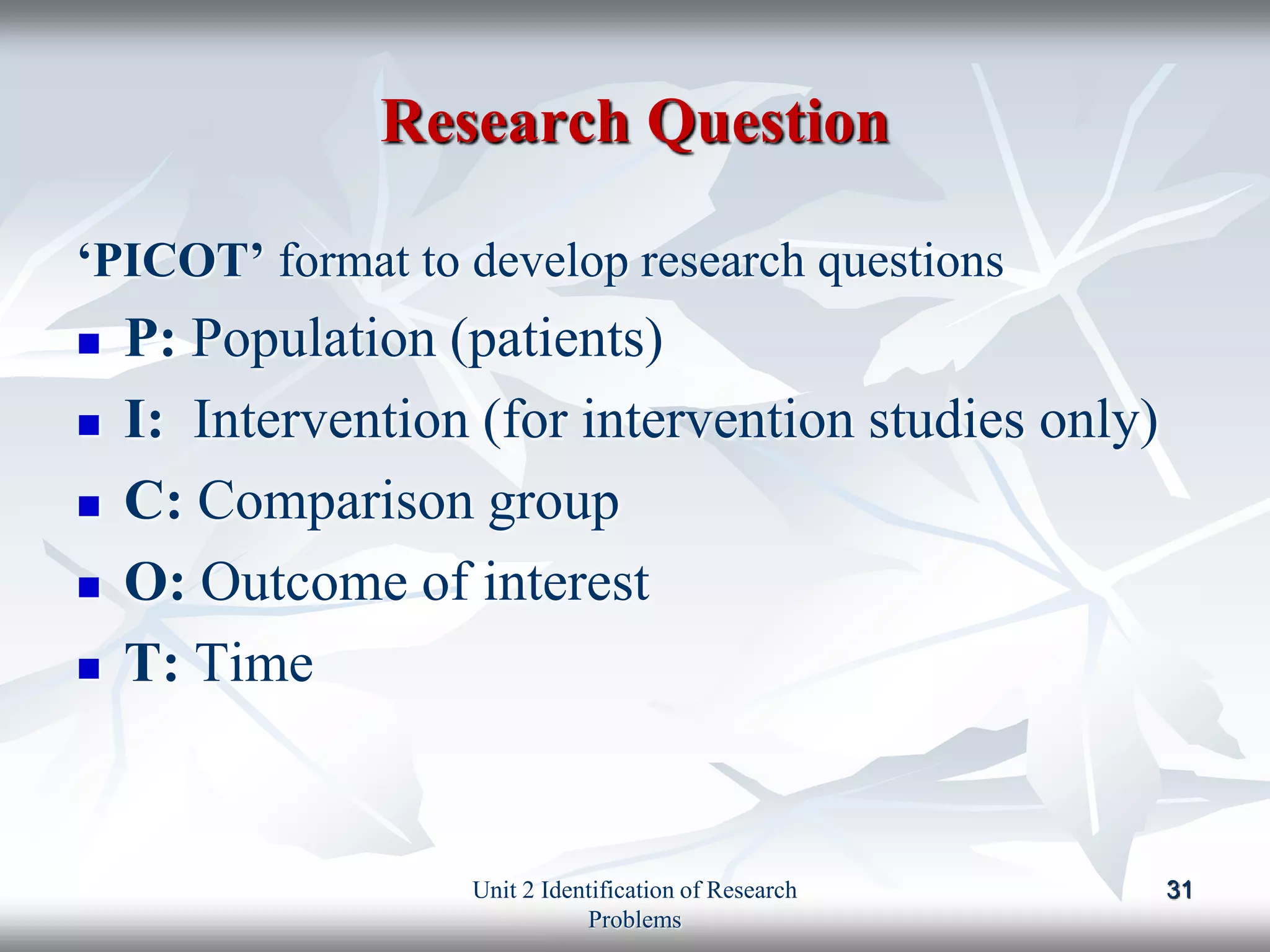This document discusses identifying research problems and developing hypotheses. It explains that properly formulating the research problem and developing a hypothesis are preliminary steps. Some key points:
- Research problems can come from previous research, practical needs, political concerns, and funding priorities.
- A good research problem is significant, researchable, original, and interesting. It should contribute new knowledge.
- The purpose statement outlines what the researcher intends to study about the problem. Research questions and hypotheses further refine and predict the relationship between variables.



